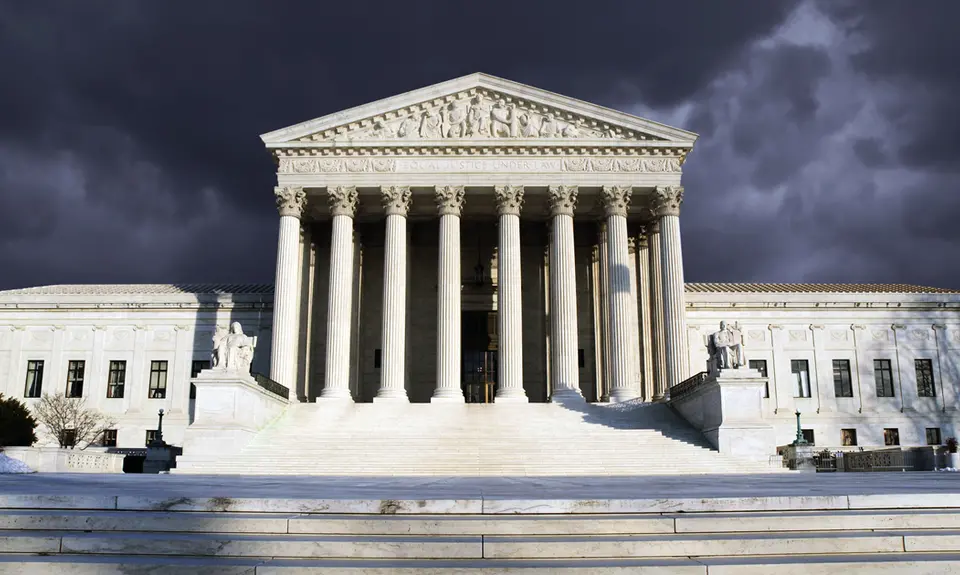The Trump-solidified hard-right majority on the Supreme Court took a grave step in their long-term effort to severely undermine separation between church and state, as well as true religious liberty, in Carson v. Makin. The 6-3 majority’s ruling in the June 2022 case will require Maine to use taxpayer money to pay for children’s religious education. As Justice Sonia Sotomayor put it, they have transformed our nation’s longstanding constitutional commitment to separation of church and state into a constitutional violation.
What was the Maine tuition program, and how did it protect church-state separation?
In rural areas without public high schools, Maine uses private schools to deliver a public high school education to students. Parents in those parts of the state choose a private school for their children, and Maine reimburses them the tuition. To protect church-state separation, Maine does not fund sectarian schools that would use the money for religious education.
How did the Supreme Court majority rule?
The majority ruled that Maine was discriminating against religion in violation of the Constitution. They held that this conclusion follows from the “principles” of two recent church-state cases issued during the past five years, since Justice Neil Gorsuch filled the vacancy that Republicans kept open in 2016 to block President Obama from replacing the late Justice Antonin Scalia.
In 2017’s Trinity Lutheran v. Comer case, the Court ruled that a state’s grant program for organizations to improve their playgrounds cannot exclude churches even though the state constitution prohibits funding churches. The majority classified that as discrimination on the basis of the church’s religious identity or “status.” They went further in 2020’s Espinoza v. Montana Department of Revenue. In that case, they required Montana to include sectarian schools in its program funding scholarships for private schools. But they again classified Montana’s decision as discriminating against schools on the basis of their “status” as religious. They carefully avoided the question of what happens when the state knows the school will actually use the funds for its religious and not just secular education.
Now the Maine case answers that question, in an opinion written by Chief Justice John Roberts and joined by his fellow ultra-conservatives. Roberts wrote that Trinity Lutheran and Espinoza set out principles that apply when the state tries to avoid subsidizing religious use of taxpayer funds. Even though the conservatives in those decisions made a point of limiting them to “status-based” distinctions, Roberts wrote that “those decisions never suggested that use-based discrimination is any less offensive to the Free Exercise Clause.”
It was a classic bait-and-switch operation. In fact, Justice Elena Kagan had joined the Trinity Lutheran majority opinion, perhaps in an effort to limit it to playgrounds.
How does this harm church-state separation?
The remaining moderate justices had two separate dissents discussing the harm of the majority decision.
Justice Breyer wrote a dissent, joined by Justice Kagan and (in part) Justice Sotomayor. Breyer pointed out that the First Amendment has two religious clauses: the Establishment Clause and the Free Exercise Clause. He criticized the majority for “pay[ing] almost no attention to the words in the first Clause while giving almost exclusive attention to the words in the second.”
Breyer noted that the Court has in the past allowed a state to fund religious education if it chooses, it has never before ruled that a state must do so. This reinterpretation of the First Amendment opens the door to dangerous possibilities. For instance, does a school district that pays for public schools now have to pay equivalent funds to parents who wish to send their children to religious schools? In what other circumstances will a state now have to pay people for the religious equivalent of a secular benefit the state provides?
Breyer quoted from a 1963 case when the Supreme Court ruled that Bible readings in public schools violated the Establishment Clause. In that case, one of the justices specifically noted “the increased risk of religiously based social conflict when government promotes religion in its public school system.” Although that was more than half a century ago, Breyer recognized that the same “potential for religious strife is still with us,” clearly an understatement at a time when aggressive Christian nationalism threatens our society. Justice Breyer emphasized that to truly protect religious liberty, taxpayers should not be forced to subsidize religion.
Justice Sotomayor wrote a separate dissent that did not mince words, even calling the ruling “perverse.” She observed that “in just a few years, the Court has upended constitutional doctrine.” She noted that the Court’s “increasingly expansive view of the Free Exercise Clause risks swallowing the space” states have always had to respect both free exercise and church-state separation. She concluded her dissent with a warning:
What a difference five years makes. In 2017 [Trinity Lutheran], I feared that the Court was “lead[ing] us . . . to a place where separation of church and state is a constitutional slogan, not a constitutional commitment.” Today, the Court lead us to a place where separation of church and state becomes a constitutional violation. … With growing concern for where this Court will lead us next, I respectfully dissent.
Reimagining church-state separation as a constitutional violation is exactly what the Religious Right has sought for decades – and a key reason they have worked so long to capture the courts.
